Your shopping bag is empty
Go to the shop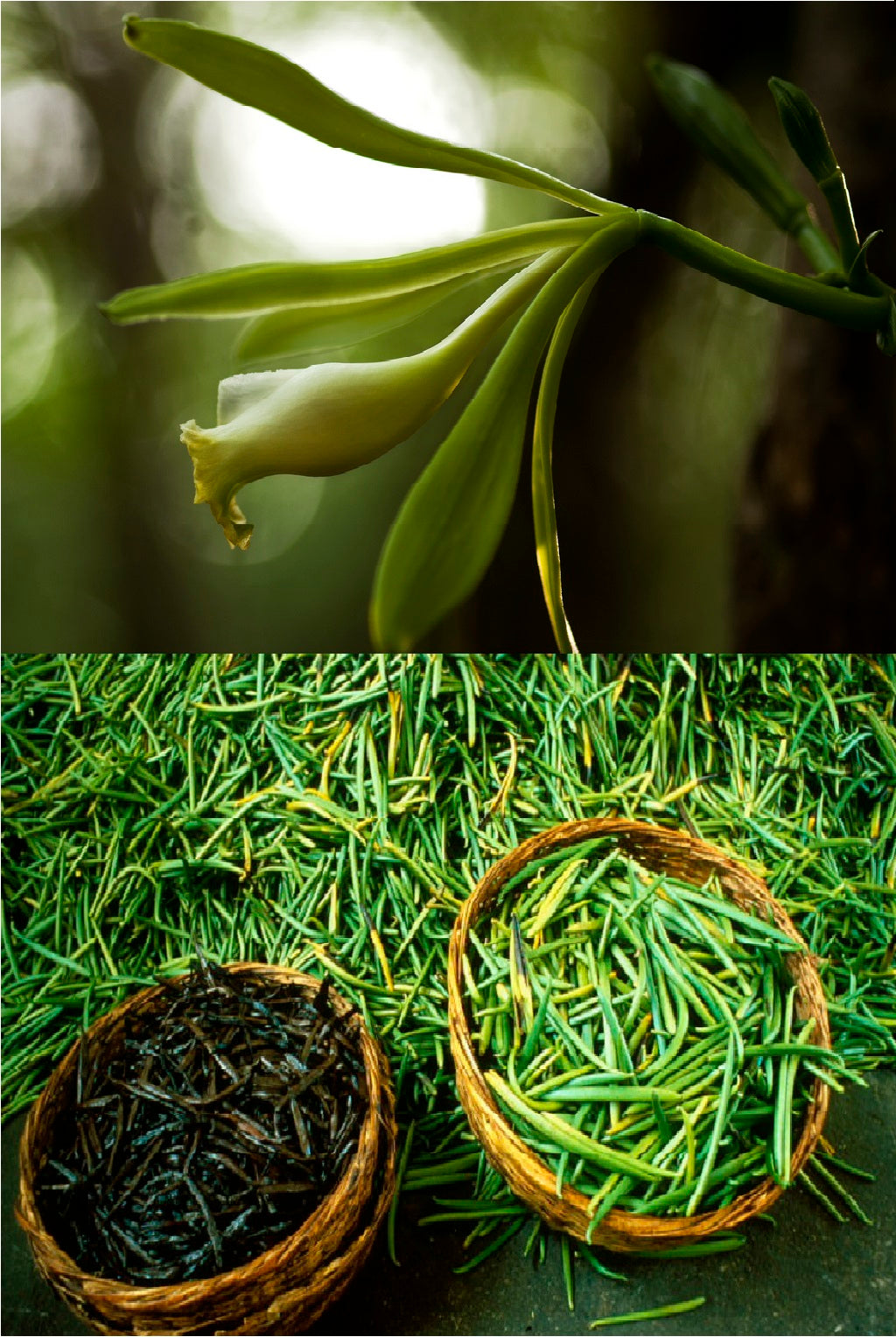
The Vanilla
Know all about Vanilla Beans.
Simplicity is not a choice but a way to live life. Vanilla is the choice of people who love to be simple and live life with eternal peace. Vanilla is one of the most common flavors which is eaten worldwide. It is the safest spice that gives you the aromatic and delicious dessert bite. There is so much you can know about Vanilla, and you will be amazed by certain facts that we are going to share—looking for a Guide to know Vanilla? Here it is for you.
Back in the 15th century, this spice was first cultivated and enjoyed by Totonac people living in Mexico. During those days, civilizations were taken over by one another. Aztecs conquered the Totonac people. As a result, they got the Vanilla beans as a tribute. Soon Spanish conquistadors took over Aztecs, and finally, Vanilla was thoroughly enjoyed by Europeans. Vanilla beans are safely tucked in Vanilla pods, grown with utmost care and vigilance by expert farmers. The selection of the right seeds, plantation, and ensuring richness of the soil; all play a vital role in organically raising a Vanilla Plant. The edible seeds of Vanilla provide the rich-aromatic flavour, and Vanilla Pods can be used for making Vanilla Sugar, Vanilla Extract, Vanilla paste and more. Primary producers of Vanilla beans are Mexico, Madagascar, Uganda, Papua New Guinea, Indonesia etc.
Vanilla beans take eight long months to get the age of harvesting. The green seeds germinate in a favorable environment, and the saplings have the flowers within the next three months. The Vanilla
orchid then experiences pollination, and yellow flowers turn into pods within few weeks. Later, the aging of the pods turns them into rustic colors. The Vanilla beans undergo a fascinating process before they reach your home. Do you want to know more? Keep reading!
An exciting tale related to Vanilla Beans!
The legend of Princess Xanat
A princess married mortal and fled to the forest with her lover; her father forbade her for this act. After getting caught, both lovers got beheaded, and as soon as their blood touch the grown, something unexpected grew. An orchid grew out of the soil, and it was Vanilla Orchid. The tale is as per Totonac mythology.
Types of Vanilla Orchids:
Vanilla Planifolia & Vanilla Tahitensis, the two major types of vanilla orchids.
People often think Vanilla is a fruit. Let’s break this myth. Vanilla is a spice that is bean-filled with aromatic flavor. A long seedpod carries these beans and protects them from insects and weeds. The growth cycle of these Vanilla pods starts from a yellow flower that gets pollinated and becomes green; using a hot water treatment (the bourbon method) water-killing, it gradually turns rustic in color. The two major species of Vanilla are cultivated as consumable goods; Vanilla Palnifolia & Vanilla Tahitensis. In the countries like Madagascar, Uganda, Indonesia, Tahiti, and Mexico. It is considered as one of the expensive spice, fetching second spot in the world’s most expensive spices.
Vanilla Planifolia: The original Madagascar Bourbon Vanilla bean is termed Planifolis Vanilla. It was earlier grown in Mexico as well. It is a more robust and aromatic Vanilla sticks that is famous worldwide.
Vanilla Tahitensis: The one grown in Papa New Guinea & Indonesia and has a comparatively lesser flavor is Tahitensis Vanilla beans. Pastry chefs often use it as it has sweet, fruity, and floral flavour. It is a mutated form that has its roots in Tahiti's.
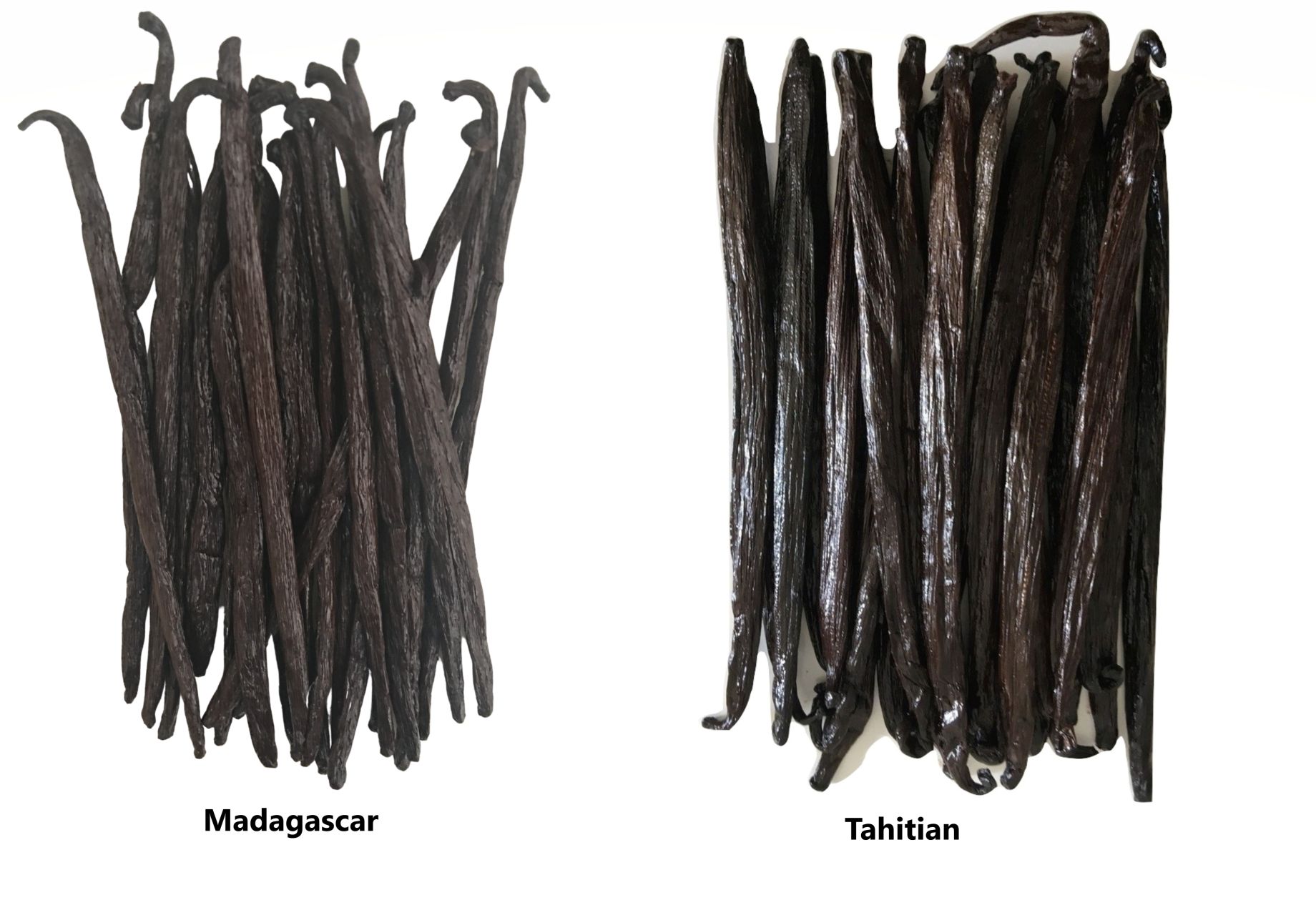

Process Post Harvest
The two processes adopted post-harvesting to stop further growth of Vanilla Beans.
The essential details to mark the difference between Planifolia Beans are to stop their growth post-harvest. There are particular techniques used to complete this task. Farmers use water to kill, and in some other parts, farmers prefer sun kill. Let's elaborate and discuss the exciting technique used in different parts of the world.
Water kills (Bourbon Method)- Hot water is used to kill the growth of Vanilla beans after they are harvested. The vanilla beans are steeped in hot water for few minutes in a row. This technique was developed in the former French Bourbon Islands (now Madagascar). The temperature of hot water may vary as per the age-old techniques used by the farmers. It results in soft Vanilla Beans.
Sun kills- During the hot hours of the daytime, Vanilla beans are kept open under the sun. After hours of exposure to sunlight, Vanilla Beans start becoming hard.
The difference can be easily marked by observing the skin of Vanilla Beans, and the harder ones are sun killed and belongs to Mexico.
Tahitensis vanilla beans mature on the vine and are not killed after harvest.
Source of Vanilla Beans
Essential details about Single Source Vanilla beans and Multi-source Vanilla beans.
The single source Vanilla bean is grown by farmers and is made marketable by the team working closely with the farmers. A single organization is looking after all the different stages of making Vanilla beans marketable. It is quite an investment to maintain the various departments, including farmers, labor, farmlands, marketing team, etc. As a result, the Vanilla is provided by the same farmer, and the quality is consistent. The value of such Vanilla bean is high as compare to other multi-source Vanilla. This technique is practiced in Hawaii, Costa Rica, Tonga, Australia, New Zealand, etc.
Grown in the farmlands and sold by curing houses, these are vanillas that are not single sources instead of from two or three references. Vanilla farmers prefer to sell raw beans to the curing homes. The process is to make them marketable is performed by curing houses. The different techniques like fermentation and selection of high-quality Vanilla beans are included in the process. The curing houses procure Vanilla Beans from multiple farmers, and when you choose them as your constant Vanilla Bean provider. There is a strong chance you are getting beans from different farmers. The quality and taste may vary as per the crop yield of other farmers. Such practices are mainly observed in Madagascar, Uganda, India, Indonesia, PNG, Tahiti, Mexico, etc.
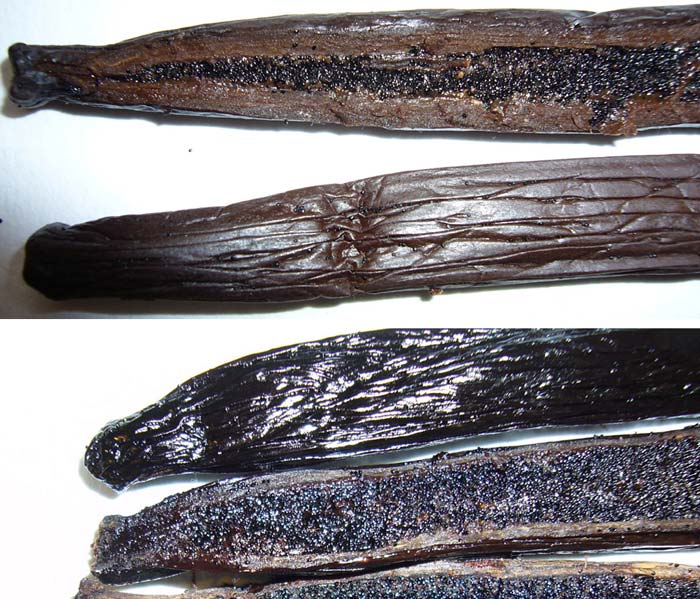

Grade A Vanilla Beans v/s Grade B Vanilla Beans
Key details about Grade A and Grade B Vanilla Beans.
We offer you Grade A and Grade B Vanilla beans which can be used for cooking, baking, preparing homemade Vanilla extracts & Vanilla Paste, and much more. You can read about the same in our Blog (it is well described here).
Grade A Vanilla Beans- Also called prime or gourmet Vanilla Beans are perfectly moist and oily. The physical characteristic of Grade A Vanilla Beans, like 6–8-inch length, presence of moisture is 30-35%, and weigh approx 7.5 beans per oz, This vanilla is visually attractive and can be a feature ingredient in gourmet cuisine.
Grade B Vanilla Beans- Also called Extract grade Vanilla beans. These are less moist, roughly 15-25%, and like 6-8-inch length, weigh around 9.5 beans per oz.
How to check the Quality of Vanilla and signs of low- quality Vanilla beans?
Appearance and unique technique to identify high quality and avoid low quality Vanilla Beans.
The most aromatic and rich Vanilla Beans will be oily at the
first touch. You can easily bend them without breaking the pod. The color of Vanilla beans can also confirm the high quality; it should be the darkest brown, very close to black color. To enhance the shelf life of vanilla beans, please store them in an airtight container in a dry place. Storage in the freezer or refrigerator is not advised as it will harden the beans. It will lose moisture and the aromatic flavor.
The split in the Vanilla bean at the end of the pod is a sign of maturity. It is perfectly ripped Vanilla. The image here reflects the Vanilla with a robust and intense flavor.
Vanilla You Don’t Want to Use In an effort to cut costs, low-quality products are sold as vanilla. Learn why coumarin-adulterated vanilla, imitation vanilla, and vanilla flavor are inferior to pure vanilla extract.
Coumarin-Adulterated Vanilla
Avoid vanilla that has been adulterated with coumarin. Coumarin, derived from the tonka bean, is inexpensive and shares some constituents with vanilla. But while it adds a
strong vanilla-like aroma, it contributes little flavor to the product. It's often added to "bargain" vanillas from Mexico, Central America, and the Caribbean.
Imitation Vanilla
Pure vanilla is expensive. In order to make the product more affordable, imitation vanilla was developed. Imitation vanilla is made from artificial flavorings, the two most common sources of which are lignin vanillin, a by-product of the paper industry that is chemically treated to taste like vanilla, and ethyl vanillin, a coal-tar derivative.
Vanilla Flavor (WONF)
This flavor descriptor indicates that the product is made With Other Natural Flavors and means that the product contains other flavor ingredients, usually essential oils and botanical extracts. Any of these blended flavors won't, of course, have the taste profile of real vanilla and synthetic chemical carriers can sometimes be introduced. But even if the additions aren't synthetic, at best you have an inferior vanilla that is "boosted" with less expensive components.


What is Vanilla Tattoo?
Meaning of JDD Tattoo mark on Vanilla beans.
At the first look, one might get confused about the Tattoo and misinterpret it as insect damage. But it’s actually the initials of the grower. This practice is common in Madagascar. You can easily see various alphabets Tattoo on different Vanilla Beans. The Malagasy alphabet will help you identify the tattoos on your own beans: a, b, d, e, f, g, h, i, j, k, l, m, n, o, p, r, s, t, v, y, z.
Why do some Vanilla beans have frost?
Reason for frost on Vanilla Beans.
People often mistake Vanilla frost with fungus, mold or the growth of microbes. It is just the moisture and reflects the high consistency of Vanillin. The best quality of Vanilla is reflected from this frost deposit. If you try a bit of the frost deposit, a rich and flavorful taste of the Vanilla will surprise you. If your vanilla beans have dried out, simply add them to warm liquid to draw out the flavor. A dry bean pod added to a mug of hot chocolate or a cup of hot tea results in a delicious experience! The beans which have the slight crystal-like frost is not hinder the quality and, after heating up, will get back inside the beans. It is just an indicator of moisture and the presence of water in the Vanilla Beans.
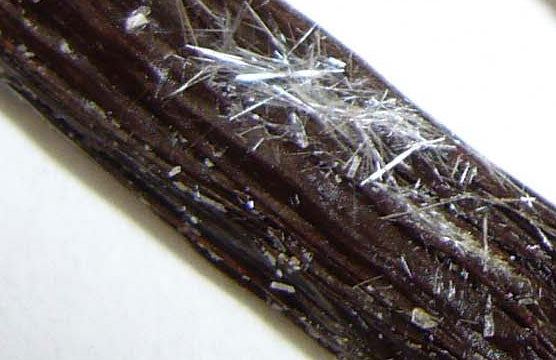
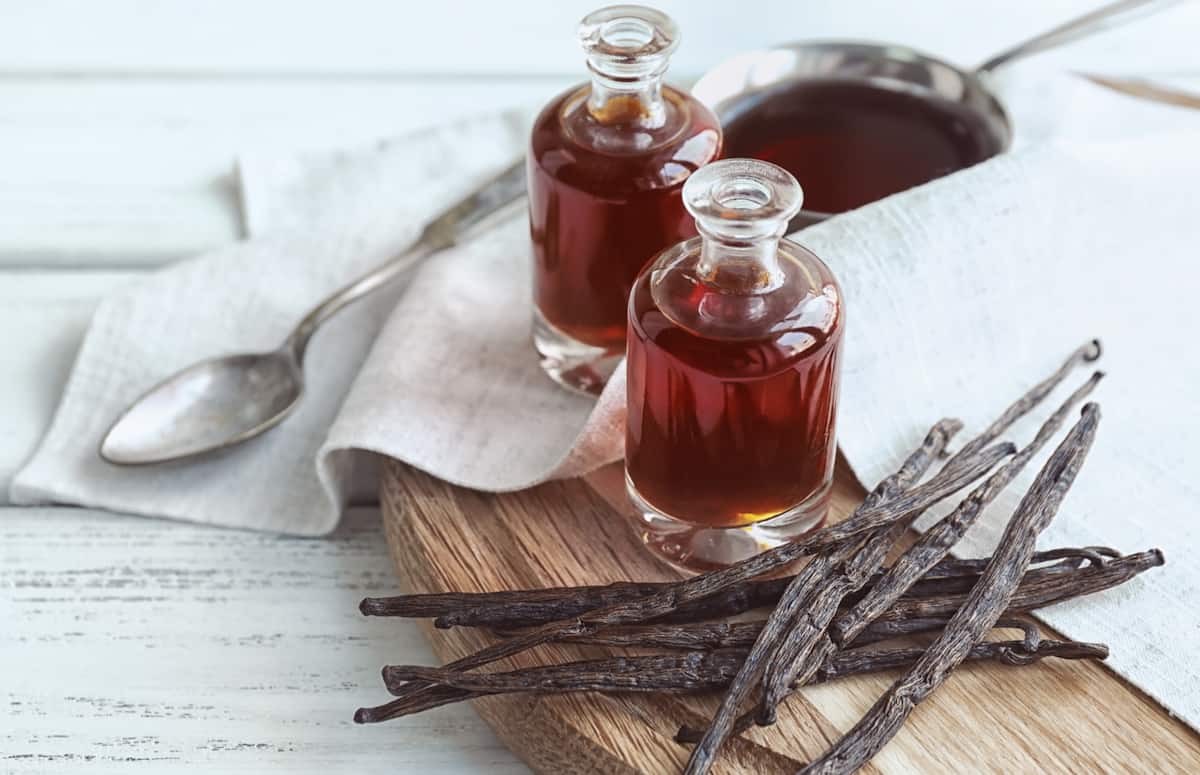
What is vanilla extract?
Essential details about Vanilla Extract.
The perfect way to offer the Vanilla liquid form is by blending it with Vodka. The choice of Vodka is simple, as it is neutral alcohol. The near replacement of Vodka for making Vanilla extract is brandy or Jinn, whichever is readily available. A perfect extract requires aging after blending as per formula. Please visit our recipe blog for more details for Vanilla extract recipes, and they can be made at home. Our easy-to-use Extract calculator helps you determine the ideal ratio of vanilla beans to alcohol for homemade extract. let us guide you through the process, ensuring a flavorful creation with our high-quality vanilla pods. Start your vanilla extract journey!

